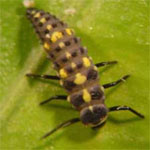Beneficial Insects: Predators
Not every insect you see around your plants is harmful—some insects are beneficial. Beneficial insects are good predators or pollinators, and many occur naturally in gardens.
Beneficial predators feed on many insects that are considered pests. The following predators are important to integrated pest management programs:
Assassin Bugs
You can usually find an assassin bug in foliage, which is where they attack insects such as caterpillars. Although assassin bugs are typically black or brown, they can also be brightly colored.
Ground Beetles
Adult ground beetles are black (sometimes they may be metallic) and can be about an inch long. Both adults and larvae, which are active at night, feed on pests such as crickets and earwigs.
Lacewings
These green insects can be found on grass, weeds, and shrubs. Lacewing larvae feed on aphids.
Ladybugs
Adult ladybugs, as well as larvae, feed on soft-bodied pests such as aphids and mealybugs. Ladybugs have oval bodies and can be an array of colors, but the most well-known species are usually orange or red with black markings.
Praying Mantids
Adult praying mantids can be identified by their brown or green bodies that are typically more than two inches longs. Praying mantids wait in foliage to ambush their prey. Although it may look like they’re praying, their front legs are modified to grab and hold prey.
Spiders
Spiders, who are all predators, feed on a variety of insects. Spiders that don’t build webs are particularly useful in controlling pests that live in soil surface or plant foliage.
Adapted and excerpted from:
“Insects,” UF/IFAS Living Green (Accessed 01/2014).


